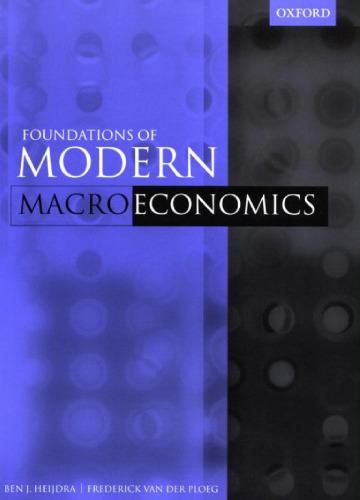For future reference we derive the expressions for the output multipliers. First, we use (GMEN) and (GMEN)
Question:
For future reference we derive the expressions for the output multipliers. First, we use (GMEN) and (GMEN) to derive the effect of domestic and foreign fiscal policy on the world interest rate:
dr*=dr* (1 + 77)EyG(1 + (DNENwEmY) >
dg dg* 2 [EyR(1 + (i,,TENwemy) + WNENWEMR]
(11.50)
Next, we use (LM(ASN)), (LWAS7,T)), and (11.50) to derive the output effects:
dy_ dy* dy* (1 + OwNEyGENwemR
, > 0.
dg dg* dg dg* 2 [cyR (1 + (DNENwEmy) + WNENWEMRI The key thing to note is output effects in both co Monetary policy in thL but harm the foreign col increase in the domes:..
rium locus from GMEN-(ti LM(ASN) l . There is cloy outflows lead to a depre,.
domestically produced g towards goods produced price level falls and con!
fall in output and emplc etary policy is referred stimulated at the expense 11.2.2 Real wage If both countries experi,.
Table 11.4 by setting :. =
analysis. Under real war,, are equal to:
Y = --NNENtv [wo +
Y* --(DNENw [ +
286 Chapter 11: The Open Economy I go ge rigidity in y a rise in g) shifts up both ment spending dominates latter (i.e. ar*/ag is largest C economy experiences a fence, the fiscal stimulus in This is why this pheable to pull itself and the icy. Why does it work? The v leads to upward pressure
:ause the domestic currency
- -eased. This stimulates out-
-.erest rate causes the price ce nominal wages are fixed,
'lins the increase in output tput multipliers. First, we and foreign fiscal policy
(11.50)
e the output effects:
Figure 11.10. Monetary policy with nominal wage rigidity in both countries
Step by Step Answer:

Foundations Of Modern Macroeconomics
ISBN: 9781264857937
1st Edition
Authors: Ben J. Heijdra, Frederick Van Der Ploeg






